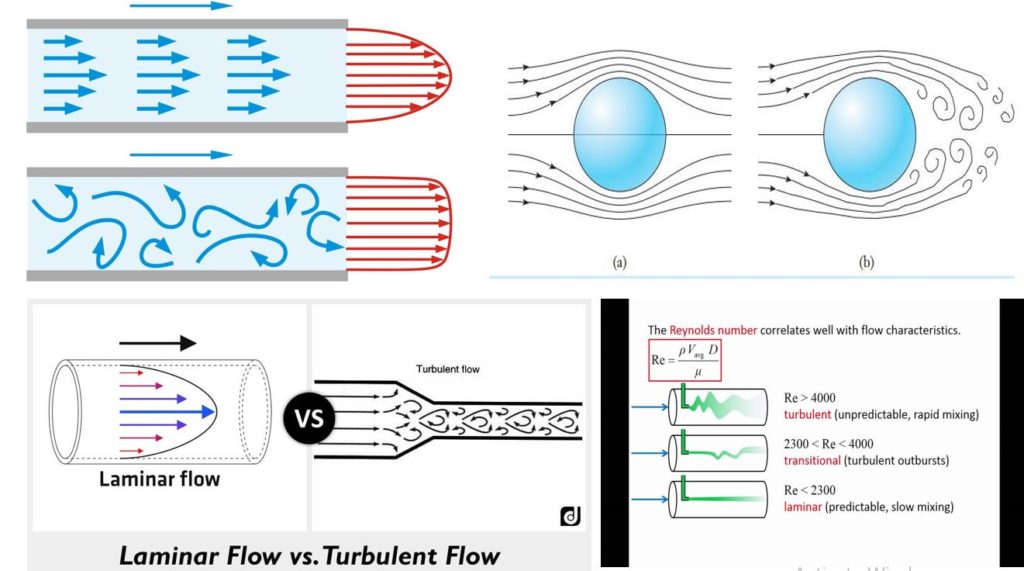Understanding Laminar and Turbulent Flow

What is Laminar ?
Laminar flow or streamline flow in pipes (or tubes) occurs when a fluid flows in parallel layers, with no disruption between the layers. At low velocities, the fluid tends to flow without lateral mixing, and adjacent layers slide past one another like playing cards. There are no cross-currents perpendicular to the direction of flow, nor eddies or swirls of fluids. In laminar flow, the motion of the particles of the fluid is very orderly with all particles moving in straight lines parallel to the pipe walls. Any lateral mixing (mixing at right angles to the flow direction) occurs by the action of diffusion between layers of the liquid. Diffusion mixing can be slow however if the diameter of the pipe of tube is small then this diffusive mixing can be very significant.
What is the Turbulent Flow ?
Turbulent flow is a flow regime characterized by chaotic property changes. This includes rapid variation of pressure and flow velocity in space and time. In contrast to laminar flow the fluid no longer travels in layers and mixing across the tube is highly efficient. Flows at Reynolds numbers larger than 4000 are typically (but not necessarily) turbulent, while those at low Reynolds numbers below 2300 usually remain laminar. Flow in the range of Reynolds numbers 2300 to 4000 and known as transition.
Laminar and turbulent flows can exist in the same tube network when operated at different flow rates. The Reynolds number for a Vapourtec 1mm bore tubular reactor flowing water at 10 ml/min is only slightly above 200. We can safely assume that under normal operational conditions the flow through to tubing reactors of our flow chemistry systems can be described as Laminar Flow.
There are two main types of fluid flow – laminar flow, in which the fluid flows smoothly in layers, and turbulent flow, which is characterised by chaotic motion and large amounts of mixing. In this video we explore the differences between these two flow regimes. We’ll cover how Reynolds number can be used to predict which flow regime will occur for a specific set of flow conditions. And we will look at laminar and turbulent flows in pipes, and how the flow regime affects the pressure drop in a pipe. We’ll also investigate why it is so difficult to simulate turbulent flow, and we’ll look at some of the different Computational Fluid Dynamics methods which can be used to simulate it.
Do not forget to share your opinion with us to provide you with the best posts !




0 Comments